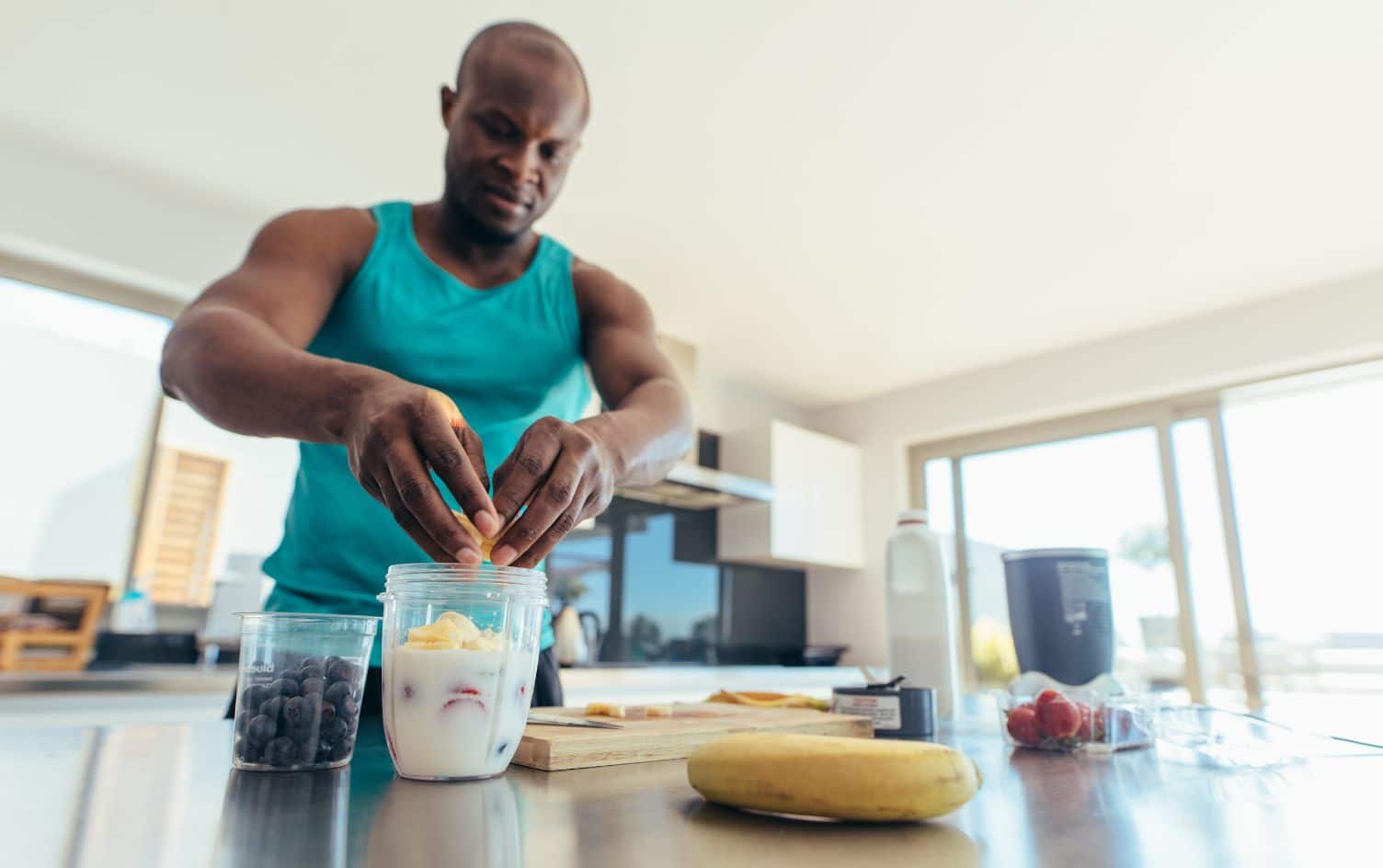Most dietary guidelines provide information based on calories (i.e., consume 2,000 calories a day), by serving sizes (i.e., a serving of protein is the size of the palm of your hand) or by percentages (i.e., fat should be 30% of total intake). While these guidelines can be helpful for many, athletes have a more specific set of guidelines: grams by kilogram of body weight (g/kg).
Providing information in this way allows for recommendations that aim to meet an athlete’s unique nutritional needs. For example, an athlete consuming 15% of calories from protein might consume way more protein than needed based on extremely high-calorie needs. On the flip side, sticking to 2,000 calories a day would leave most athletes in a severe energy deficit.
- Carbohydrate intake is suggested at varying g/kg based on an athlete’s level and volume of training which can range from 4–12g/kg each day.
- Protein intake ranges from 1.6–2.2 g/kg/d.
- Fat is allowed in amounts that fill the remaining needs once carbohydrate and protein needs have been met which may be above a non-athlete’s guideline of 30%.
- Beyond daily intake needs, pre- and post-workout needs are also given in this format to ensure the athlete is fueling adequately. Anyone heavily invested in their training should look at their intake in this way.
Here are a few examples of how eating based on body weight affects intake:
EXAMPLE 1: PRE-WORKOUT CARBS
The guideline is that athletes take in 3 grams of carbohydrate per kilogram of body weight three hours prior to training.
Athlete 1: A cyclist who weighs 54kg (118 pounds)
The calculation: 54 x 3 = 162 grams of carbohydrate
Sample meal: 2 cups oatmeal, 1 banana, 1 cup of orange juice and 2 tablespoons maple syrup
Athlete 2: A cyclist who weighs 83kg (183 pounds)
The calculation: 83 x 3 = 249 grams of carbohydrate
Sample meal: 3 cups oatmeal, 1 banana, 1 cup of orange juice, 4 tablespoons maple syrup, 2 slices of toast and 2 tablespoons jam.
If the heavier cyclist ate based on the lighter person’s needs, they would face a higher likelihood of having a sub-optimal performance and possibly experience bonking. If the lighter person ate the heavier person’s portions, they would likely feel sluggish and over time, gain weight.
EXAMPLE 2: PROTEIN NEEDS
Many people are under the impression that consuming a portion of protein, 20–25 grams, per meal is all the body can utilize.
This strategy is appropriate for a 110-pound runner who would end up consuming roughly 100 grams of protein through meals and snacks. However, a 200-pound lifter would fall almost 50% short on the guideline of 1.6–2.2 grams of protein per kilogram of body weight per day if limiting meals to 25 grams of protein. Here’s what the breakdown of protein consumption by body weight would look like:
Athlete 1: 50kg (110-pound) runner
The calculation: 50kg x 1.8 grams protein = 90 grams protein/day = 30 grams per meal
Sample meal: 1 cup broccolini, 2 tbsp peanut sauce, 4 ounces flank steak, 1 cup baked sweet potato
Athlete 2: 91kg (200-pound) lifter
The calculation: 91kg x 2.2 grams protein = 200 grams protein/day = 67 grams per meal
Sample meal: 6-inch turkey avocado sub, 1 cup cottage cheese, 1 cup lentil soup, 2 hard boiled eggs
EXAMPLE 3: FAT INTAKE
For the average person, fat intake should be roughly 30% of daily calories. On a standard 2,000-calorie diet, this would be 66 grams of fat a day. When we look at athletes, it is vital to their performance that protein and carbohydrate intake be met before fat fills in the gap. Fat is there to round out the intake after protein and carb needs are met based on individual overall calorie needs. This makes the calculation a bit involved. It isn’t a grams x kg situation, instead it works backwards and looks something like ‘total daily calories desired – (carbohydrate g/kg x 4 + protein needs g/kg x4) = calories left for fat.
Consuming nutrients based on body weight ensures you are fueling your muscles to perform, recover from training and maintain general good health. If this way of thinking about nutrition is confusing, get in touch with a sports dietitian who can make a nutrition plan to meet your needs.
Originally published February 2020, updated February 2023
Ready to take the next step? Unlock MyFitnessPal Premium to access custom goal settings, quick-log recipes, and guided plans from a registered dietitian. Premium users are 65% more likely to reach their weight loss goals!




